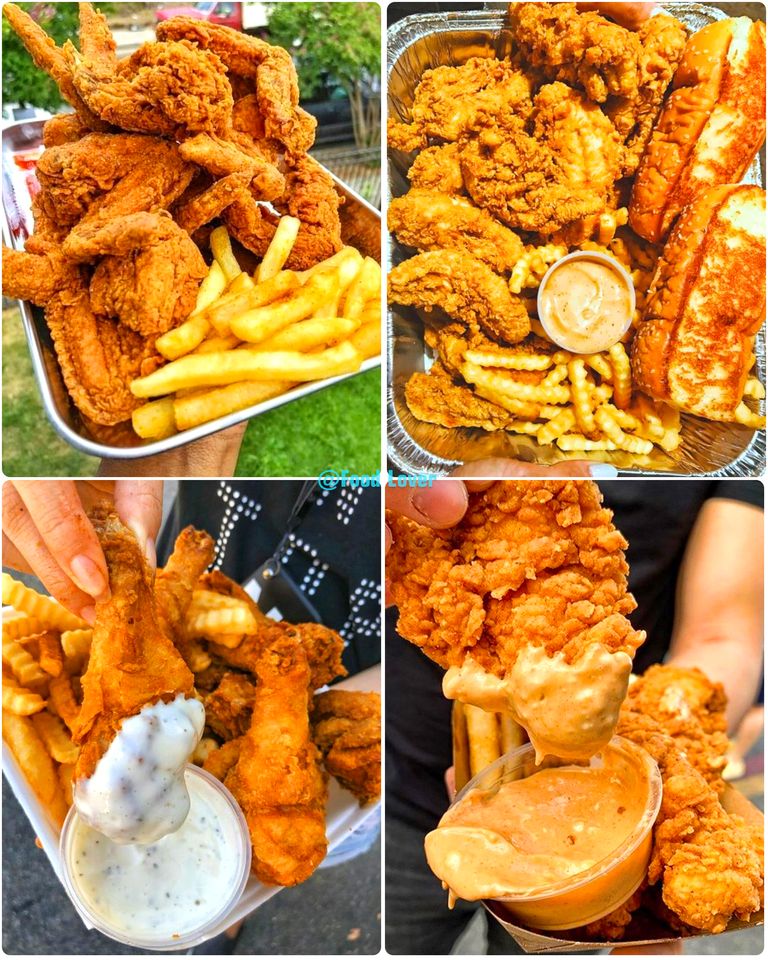- Marinate the Chicken:
- In a large bowl, mix the buttermilk with hot sauce, 2 teaspoons salt, 1 teaspoon black pepper, 1 teaspoon garlic powder, and 1 teaspoon paprika.
- Add the chicken pieces, ensuring they are fully submerged. Cover and refrigerate for at least 4 hours, or overnight for the best flavor.
- Prepare the Flour Coating:
- In a large shallow dish, mix together the flour, cornstarch, baking powder, 2 teaspoons salt, 1 teaspoon black pepper, 1 teaspoon garlic powder, 1 teaspoon onion powder, 1 teaspoon paprika, and 1/2 teaspoon cayenne pepper.
- Coat the Chicken:
- Remove the chicken from the buttermilk marinade and let the excess drip off. Dredge each piece thoroughly in the flour mixture, pressing the flour onto the chicken to ensure a good coating. Shake off any excess flour.
- Heat the Oil:
- Fill a deep skillet or Dutch oven with about 2 inches of oil. Heat the oil to 350°F (175°C). Use a thermometer to monitor the temperature, as maintaining the correct temperature is key to achieving perfectly fried chicken.
- Fry the Chicken:
- Carefully add the chicken pieces to the hot oil, without overcrowding the pan. Cook in batches if necessary.
- Fry for about 10-12 minutes for smaller pieces and 14-16 minutes for larger pieces or until the chicken is golden brown, crispy, and cooked through. The internal temperature should reach 165°F (74°C) when checked with a meat thermometer.
- Turn the pieces occasionally to ensure even cooking and browning.
- Drain:
- Use tongs to transfer the fried chicken to a wire rack set over a baking sheet to drain. This helps keep the chicken crispy by allowing air to circulate around it.
- Serve:
- Serve the fried chicken hot and crispy. It can be enjoyed on its own or with your favorite dipping sauces, sides like mashed potatoes, coleslaw, or biscuits, and a refreshing beverage.
Tips for Perfect Fried Chicken:
- Marinating Time: The longer you marinate the chicken in buttermilk, the more tender and flavorful it will be.
- Oil Temperature: Keeping the oil at a constant temperature is crucial. If the oil is too hot, the outside will burn before the inside is cooked; if it’s too cool, the chicken will absorb too much oil and be greasy.
- Resting the Coated Chicken: Let the coated chicken sit on a wire rack for about 10 minutes before frying. This helps the coating stick better during frying.
- Safety: Be careful when working with hot oil to prevent splatters and burns.
Enjoy crafting this classic dish at home, and feel free to experiment with different spices in the marinade or flour coating to customize the flavor to your liking.
